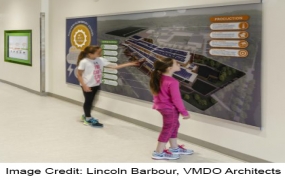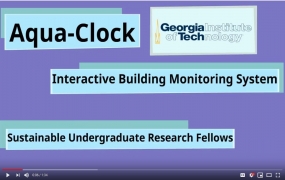Organized by: The Brook Byers Institute for Sustainable Systems and School of Earth and Atmospheric Sciences
The Living Building is like any living organism; it must use its resources wisely. Led by Dr. Michael Chang of the Brook Byers Institute for Sustainable Systems and Dr. Dana Hartley of the School of Earth and Atmospheric Sciences, this pilot project for The Kendeda Building for Innovative Sustainable Design created an innovative building dashboard system for The Kendeda Building.
Ten Georgia Tech undergraduates were selected as the inaugural (2017-2018) class of Sustainable Undergraduate Research Fellows (SURF). The undergraduates represented all six colleges at Georgia Tech and were selected from a group of 88 applicants. After being selected, the team was quick to get to work.
A New Direction
A challenge to think differently is a hallmark of The Kendeda Building, and the students rose to the occasion. The SURF team’s first decision was to break out of the confines of “the screen” as the medium for communicating information and knowledge about the fitness and function of the building. The students considered many different ways to convey information and to immerse visitors in the “Living Building experience.” Among the methods the group discussed included using ambient lighting, sound, or color to convey if the building was “happy” or “sad.” Another idea required users to complete an action or participate in a game in order to receive a reward (like energy to power their phones or laptops, or to get a free coffee). The brainstorming time was productive, and the students were left with many ideas to work through.
Having generated many ideas, the SURF team had to pause and develop a set of values by which they could evaluate their ideas. They settled on four values that any system they ultimately produced should adhere to:
- It should be sustainable;
- It should be inclusive of the whole Living Building community;
- It should be educational (and not just entertaining); and
- It should accurately report and represent the underlying data/phenomena.
The team was also challenged to develop an overarching theme or narrative that would unite their selected concepts.
Resources:

